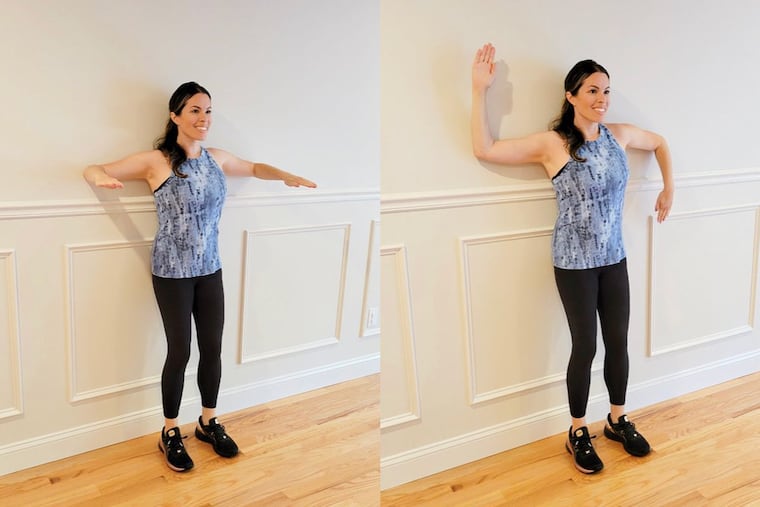3 ways to strengthen shoulder flexibility
Don’t let the weight of poor flexibility rest on your shoulders. Practice these simple stretches to help reduce your risk of injury, lessen aches, improve your range of motion and perk up posture.

Can you scratch your own back? It sounds like a simple task, but it may surprise you to learn it’s not that easy for many people. In fact, having a limited range of motion at the shoulder joint is so prevalent that there is a test designed specifically to assess your ability in this area.
The Apley scratch test is a quick and easy exercise exam that helps determine the rotation capabilities of the shoulder joint. When healthy, this ball and socket joint is the most flexible one in the body, providing an impressive 360 degrees of motion.
But for the shoulder joint to operate optimally and without restrictions during such daily activities as putting on a T-shirt, lifting an object, or buckling your seatbelt, the surrounding tissue must be fully functional, loose, and limber. By performing the Apley scratch test, you can spot muscle imbalances and weaknesses, and implement exercises to help stretch, strengthen, and safeguard this sensitive area.
If you experience pain or have major mobility issues at any point during this test, consult your physician. As a precaution, this assessment is not intended for those with current injuries or those who have undergone shoulder-related surgery.
Here’s how it works:
Step 1. Extend your left arm up overhead and allow your forearm to drop behind your head, bending at your elbow. Your palm should be facing your back. Try to touch the top of your right shoulder blade with your fingertips.
Step 2. Now, bring your left arm behind your back, palm facing away from you, and try to touch your fingertips to the bottom of your right shoulder blade. When complete, repeat both steps on the opposite side. For both steps, avoid arching your back or rotating your torso.
Step 3. Another version of this test entails combining Step 1 and Step 2. For this, you will try to touch the fingertips to each other. Ideally, you should be able to make contact though it’s natural for one side — often your dominant side — to be slightly tighter.
If you are able to hit the intended target each time, you have good mobility. However, if you are unable to reach these landmarks or one side is considerably more flexible than the other, it’s worth considering further evaluation.
Don’t let the weight of poor flexibility rest on your shoulders. Practice these simple stretches daily to help reduce your risk of injury, lessen aches, improve your range of motion, perk up posture, and allow you to engage in your day-to-day life with ease.
Side-lying T stretch
Begin on the floor and lie on your left side with your knees and hips bent at a 90-degree angle. Your arms should be extended in front of your body with hands touching. Prop a pillow beneath your head for support.
Lift and rotate your right arm across your body, opening your chest. Continue moving your arm as far as you comfortably can toward the floor, allowing your gaze to follow your hand. Hold for 20 seconds, breathe smoothly, then bring your arm back to the starting position. Repeat on the opposite side.
Goal post arms
Stand with your back, head, and shoulders against a wall. Elevate your arms so they are bent at a 90-degree angle with the back of your arms resting on the wall.
Without shifting your upper arms, simultaneously rotate your right forearm up so your fingers are pointed to the ceiling, and left forearm down so your fingers are directed toward the floor. Hold for a count, then shift positions so your right forearm is pointing down and left forearm up. Continue alternating for 10 counts.
Wall stretch
With a dish towel in hand, face a wall and position your hand at shoulder-height on its surface.
Keep your feet in place and knees slightly bent as you slowly move your hand up the wall until your arm is fully extended. Gently push your body weight into your hand. Hold for 10 seconds, feeling the stretch within your triceps, armpit area, and shoulder. Release and repeat on the opposite side.
Ashley Blake Greenblatt is a certified personal trainer and wellness coach in South Jersey. To learn more about her virtual training program, go to ashleyblakefitness.com.